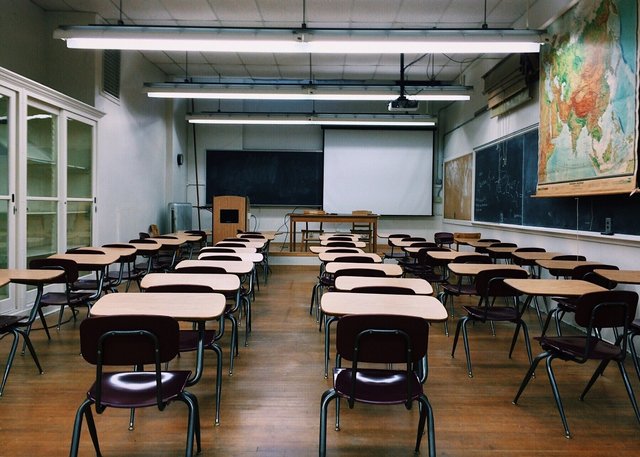Dear Friends! I hope you all are doing well and enjoying your days as well. Today I am going to share topic Choices! What it will be?. Let's start our topic.
The Developing Scene of the classroom: An Exhaustive Exploration
The homeroom, as far as we might be concerned, is definitely something other than an actual space where instructing and learning happen. It is the nexus of instruction, a unique climate where thoughts are traded, information is granted, and minds are formed. In this thorough investigation, we dive into the multi-layered nature of the homeroom, following its development through history, looking at its present status, and it its future in an undeniably computerized world to imagine.
The Authentic Foundations of the Classroom
To comprehend the advanced classroom, we should initially hope to its starting points. The idea of formal training goes back millennia, with early human advancements like antiquated Egypt, Greece, and China laying out frameworks of guidance to pass down information starting with one age then onto the next. These early homerooms were in many cases casual get-togethers, where understudies would assemble around a proficient individual, like a cleric or logician, to find out about subjects going from math and theory to writing and philosophy.
Perhaps of the most compelling improvement throughout the entire existence of training was the foundation of the conventional educational system in old Greece. The logician Plato established the Foundation in Athens around 387 BCE, giving an organized climate where understudies could take part in scholarly pursuits and philosophical talk. This model of training established the groundwork for the advanced study hall, with its accentuation on organized educational program, coordinated guidance, and mutual learning.
The Development of the Cutting edge Classroom
Quick forward to the current day, and the classroom has gone through critical change, driven by progresses in innovation, changes in teaching method, and changes in cultural standards. Customary classroom, described by lines of work areas confronting an instructor at the front of the room, have given way to more adaptable, understudy focused conditions that focus on joint effort, decisive reasoning, and customized learning.
Perhaps of the most striking pattern in the advancement of the cutting edge homeroom is the mix of innovation. From intelligent whiteboards and computerized projectors to workstations and tablets, innovation has turned into a fundamental piece of the growth opportunity, giving understudies admittance to an abundance of data and assets readily available. Moreover, the web has opened up new roads for getting the hang of, permitting understudies to draw in with instructive substance from anyplace on the planet and team up with friends and specialists across geological limits.
One more key advancement in the cutting edge homeroom is the reception of understudy focused educating rehearses. As opposed to latently getting data from an educator, understudies are urged to play a functioning job in their own picking up, participating in involved exercises, bunch tasks, and critical thinking practices that encourage imagination and decisive reasoning abilities. This shift towards understudy focused learning mirrors a developing acknowledgment of the significance of individualized guidance and the different necessities of students in the present society.
Challenges Confronting the Cutting edge Classroom
While the cutting edge classroom offers many advantages, it additionally presents its reasonable part of difficulties. Quite possibly of the most major problem confronting instructors today is the advanced separation, which alludes to the hole between the people who approach innovation and the individuals who don't. In a period where innovation assumes an undeniably focal part in schooling, understudies from distraught foundations might be in a difficult situation on the off chance that they need admittance to the vital devices and assets.
Furthermore, the fast speed of mechanical advancement presents difficulties as far as instructor preparing and proficient turn of events. Numerous teachers might feel unprepared to coordinate innovation into their showing practice successfully, prompting differences in innovation utilization and capability among educators and understudies the same.
Besides, the cutting edge study hall should battle with the steadily developing requests put on teachers, including state administered testing, educational program commands, and authoritative obligations. These tensions can cheapen the nature of guidance and breaking point educators' capacity to improve and adjust to the assorted necessities of their understudies.
The Eventual fate of the Classroom
As we plan ahead, the classroom is ready to go through much further change, powered by progressions in computerized reasoning, augmented experience, and versatile learning advances. These arising advancements can possibly change the manner in which we educate and master, giving customized, vivid encounters that take special care of individual learning styles and inclinations.
For instance, augmented reality (VR) innovation has proactively started to make advances in schooling, permitting understudies to investigate virtual universes, lead virtual tests, and participate in recreated situations that would be difficult to reproduce in reality. Likewise, versatile learning stages influence computerized reasoning calculations to fit guidance to every understudy's remarkable capacities and learning pace, offering designated help and criticism progressively.
Be that as it may, as we embrace these mechanical advancements, it is fundamental to stay aware of their restrictions and possible entanglements. All while innovation can upgrade the opportunity for growth in numerous ways, it's anything but a panacea for schooling's difficulties. Thusly, it is significant to find some kind of harmony among innovation and customary showing strategies, guaranteeing that understudies get balanced schooling that sets them up for outcome in an undeniably advanced world.
Conclusion
The study hall is a dynamic and steadily developing space that mirrors the changing requirements and needs of society. From its modest starting points in old civilizations to its present status as a center of mechanical development and educational trial and error, the study hall has gone through huge change throughout the long term.
As we plan ahead, the classroom will proceed to adjust and develop in light of advances in innovation, changes in teaching method, and changes in cultural qualities. While the difficulties confronting the advanced study hall are impressive, so too are the valuable open doors for development and improvement. By embracing new innovations, rethinking showing rehearses, and focusing on the requirements of understudies, we can guarantee that the study hall stays a lively and dynamic space for learning and development for a long time into the future.
Best Regards to:
@saqibmalik213

.jpg)

Saludos gracias por compartir tu participación con nosotros, feliz de tenerte por aquí, has seleccionado hablar de las aulas realmente todos tenemos experiencia de este tema porque desde niño nuestros inicios son el aula. El mayor de los éxitos.
Downvoting a post can decrease pending rewards and make it less visible. Common reasons:
Submit
Oh gosh! How classrooms have changed! There is not even a blackboard anymore. These days, they are either white or green.
Then again, the classroom might fade out completely, and class only happens online. I truly hope this is not going to be the case, as I believe there must be interaction in a classroom.
Thank you for taking part!
Good luck!
Downvoting a post can decrease pending rewards and make it less visible. Common reasons:
Submit